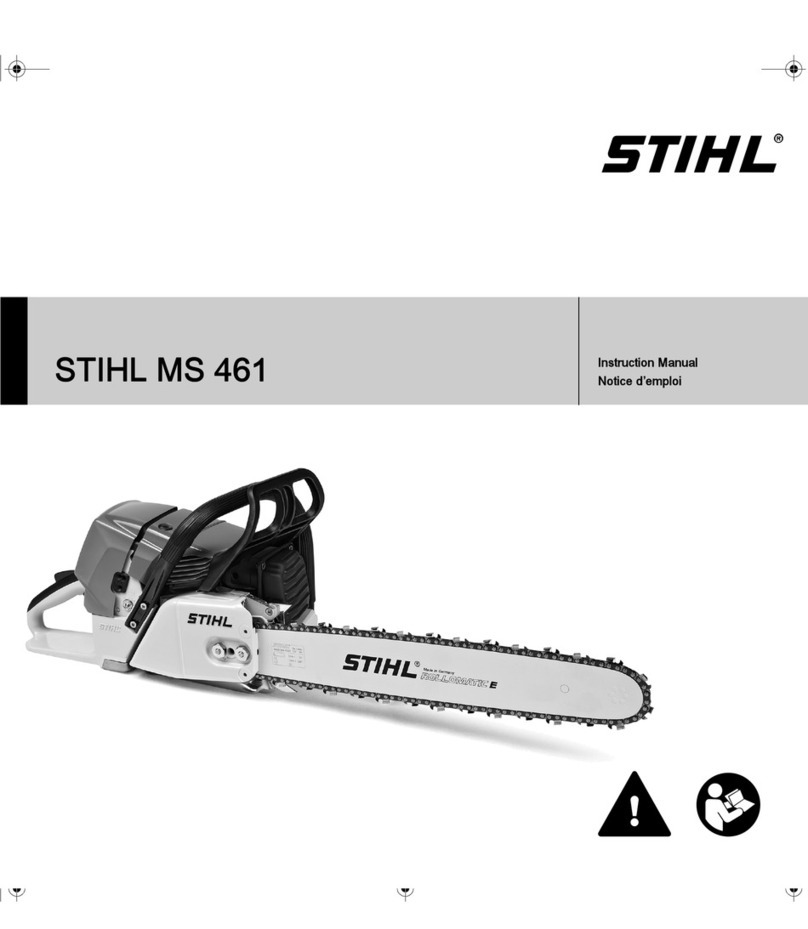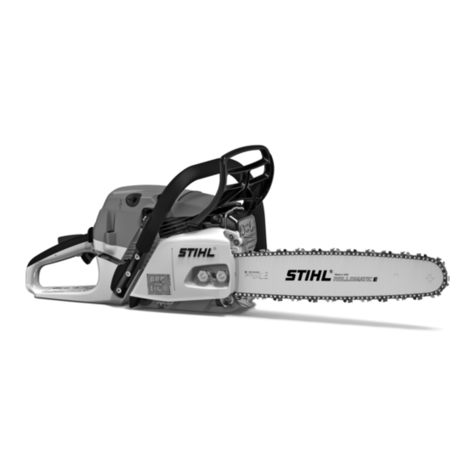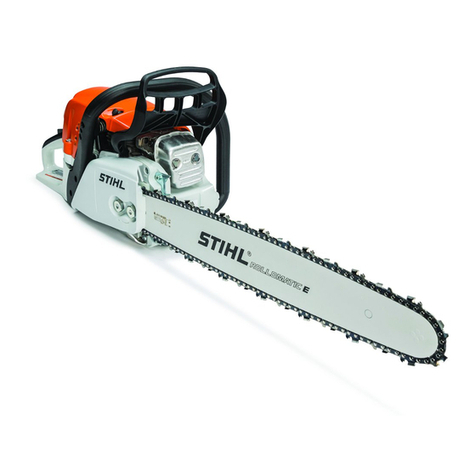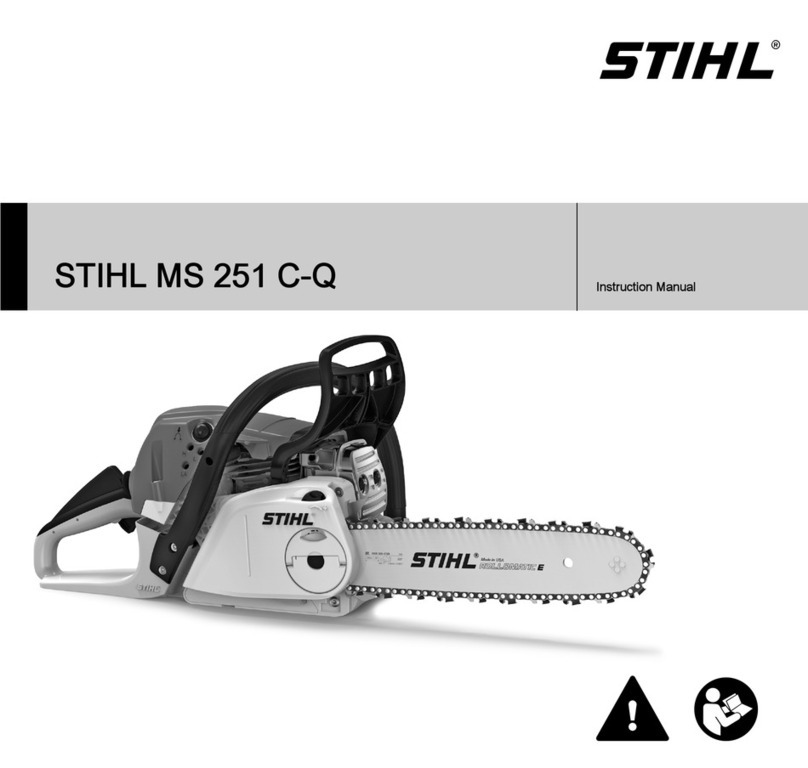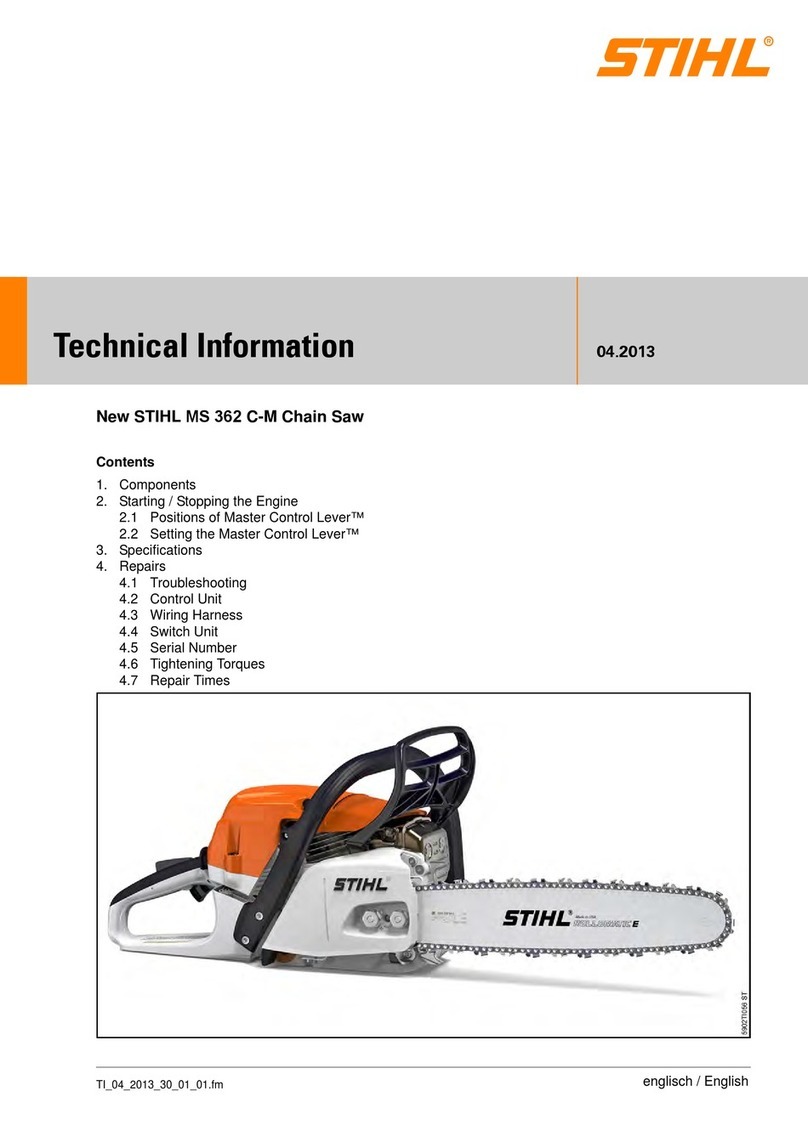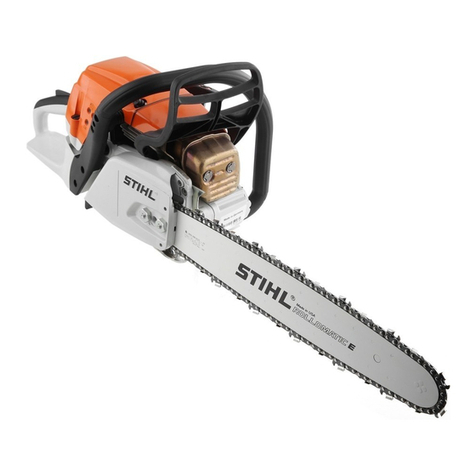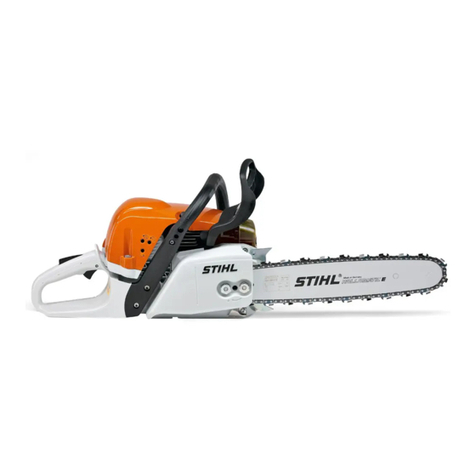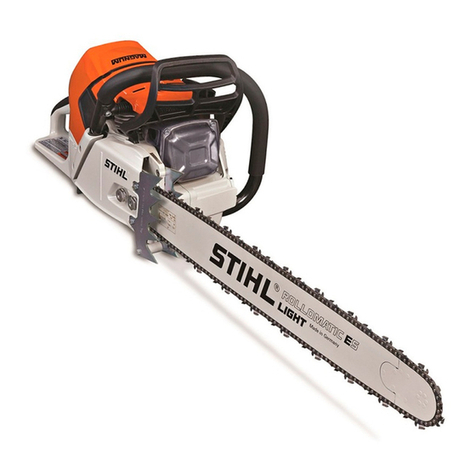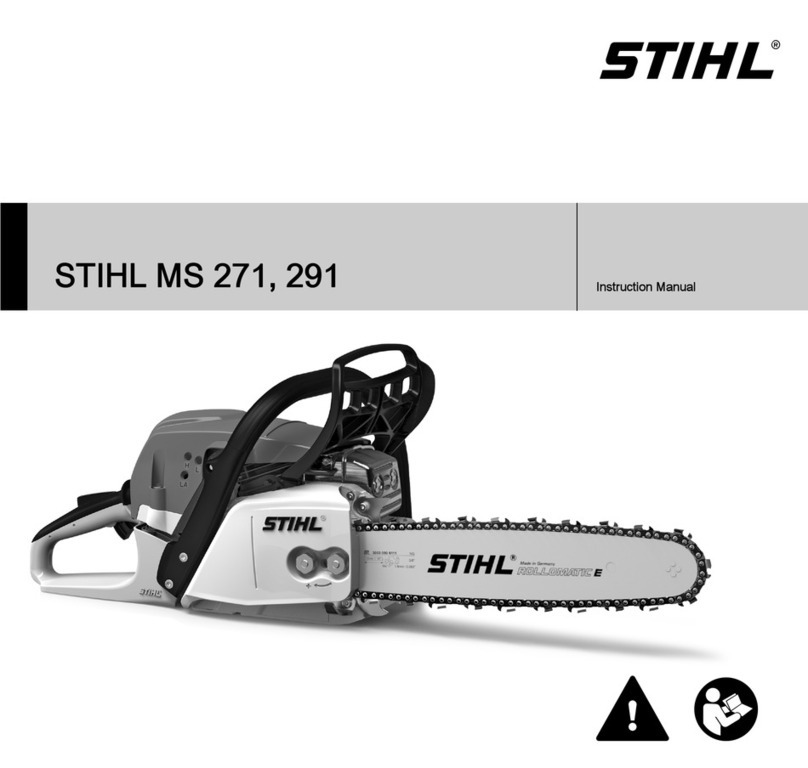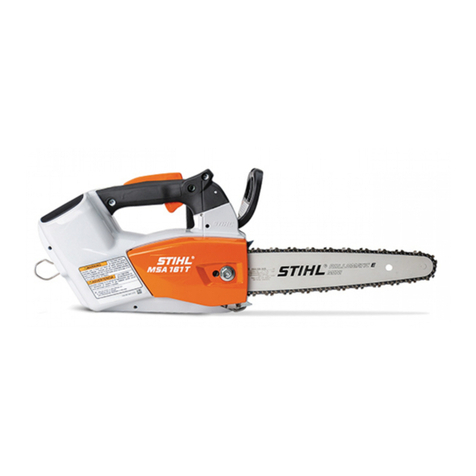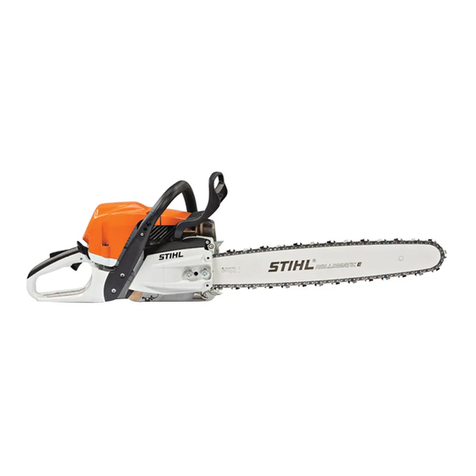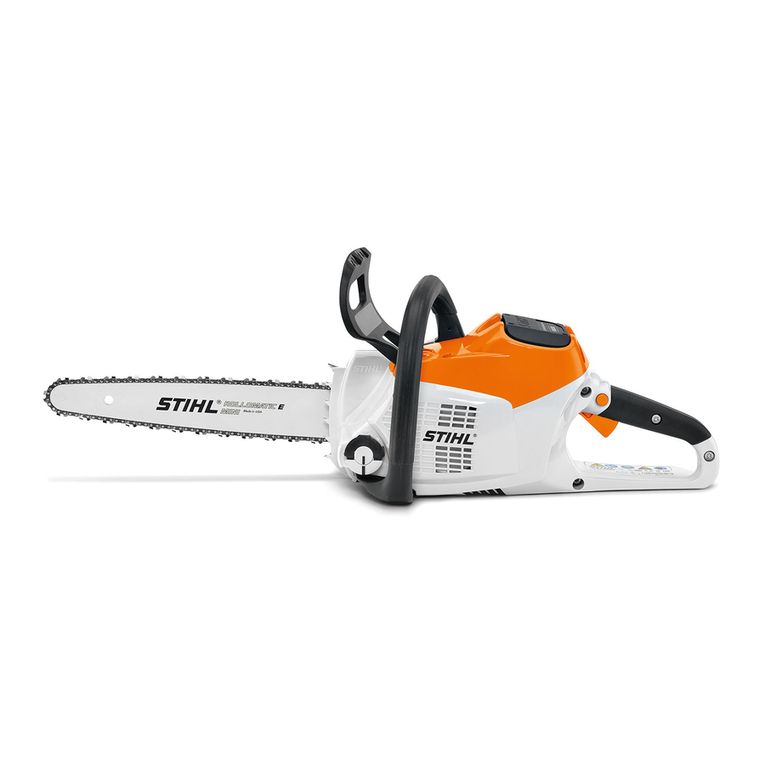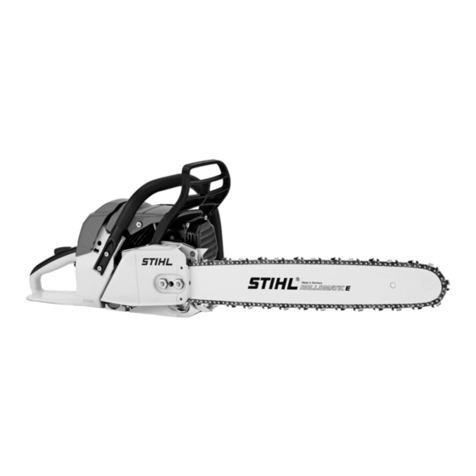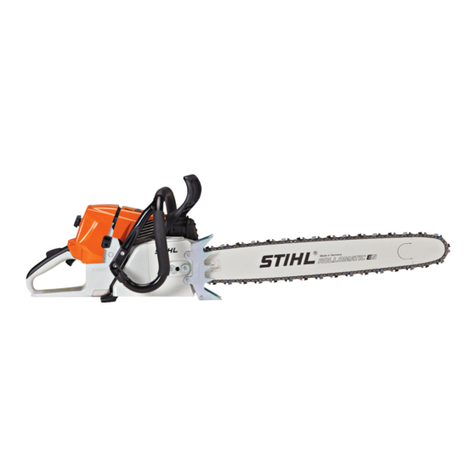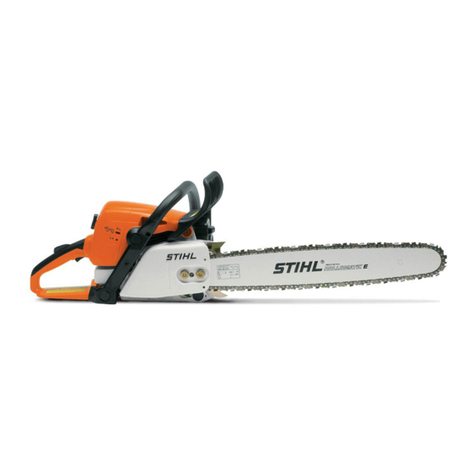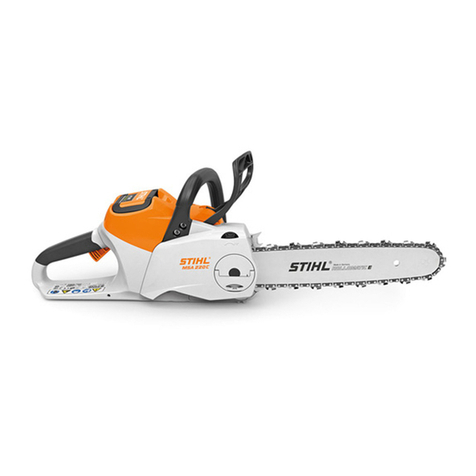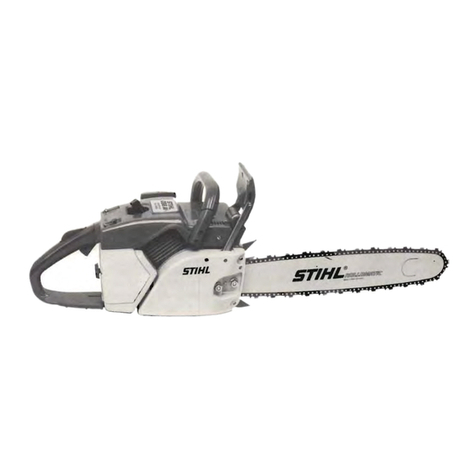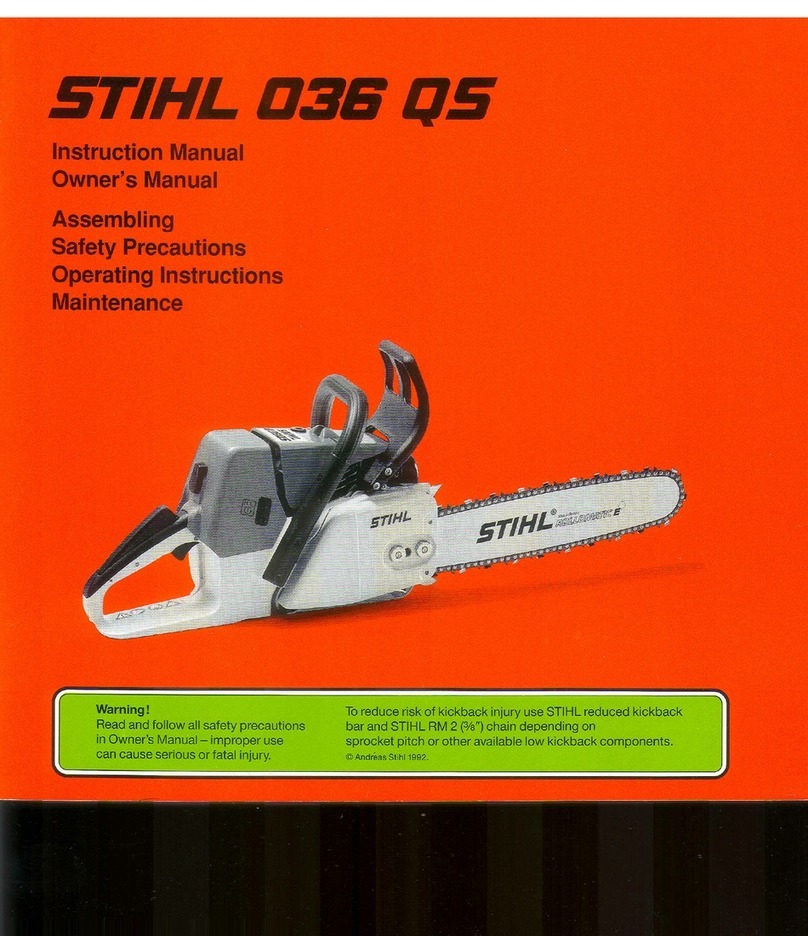STIHL 020 T 1
Service Manual
020 T Chain Saws
This manual contains detailed
descriptions of all repair and
servicing procedures for 020 T
chain saws.
You should make use of the
illustrated parts list while carrying
out repair work. It shows the
installed positions of the individual
components and assemblies.
Microfilmed parts lists are always
more up to date than printed lists.
A fault on the machine may have
several causes. Consult the
"Troubleshooting Charts" when
tracing faults.
Refer to the "Technical Information"
bulletins for engineering changes
which have been introduced since
publication of this service manual.
Technical information bulletins also
supplement the parts list until a re-
vised edition is issued.
The special servicing tools mentioned
in the descriptions are listed in the last
chapter of this manual. Use the part
numbers to identify the tools in the
"STIHL Special Tools" manual.
The manual lists all special servicing
tools currently available from STIHL.
Service manuals and all technical
information bulletins describing
engineering changes are intended
exclusively for the use of STIHL
servicing dealers. They must not be
passed to third parties.
Always use original STIHL
replacement parts.
They can be identified by
the STIHL part number, the
STIHl
logo
and the STIHL parts symbol (
The symbol may appear alone on
small parts.
STIH
© 1999, Andreas Stihl AG & Co., Waiblingen
Servicing and repairs are made
considerably easier if the machine
is mounted on the assembly stand
(1). This enables the machine to be
swivelled to the best position for the
ongoing repair and leaves both hands
free.
The machine is secured to the stand
by means of the guide bar mounting
nut (after removing the sprocket
cover).
